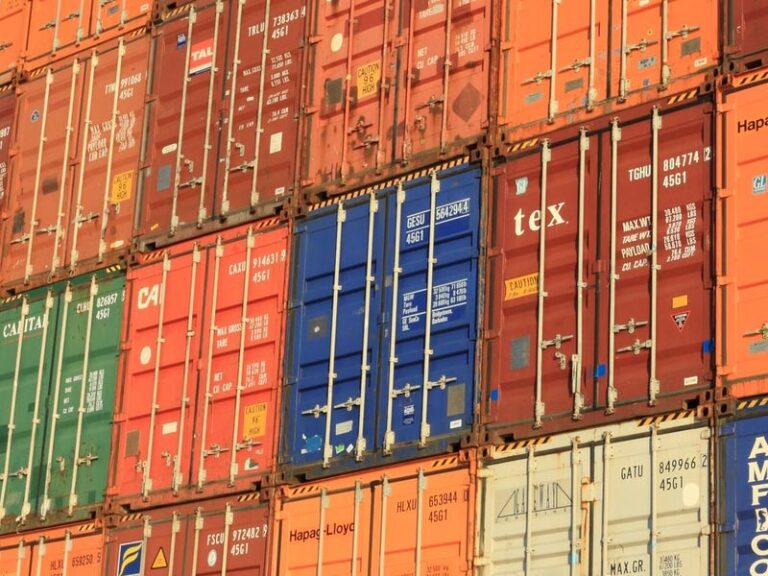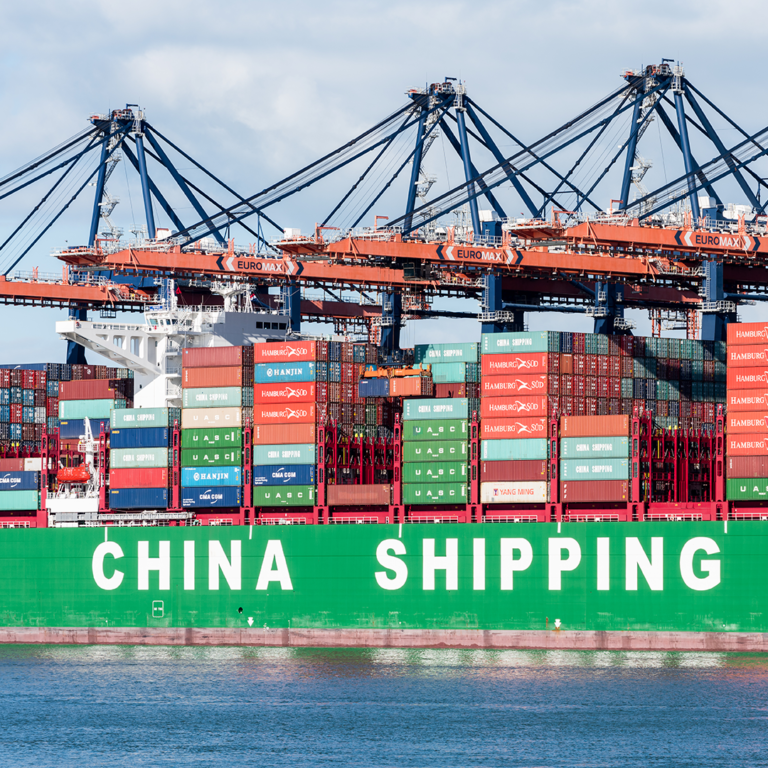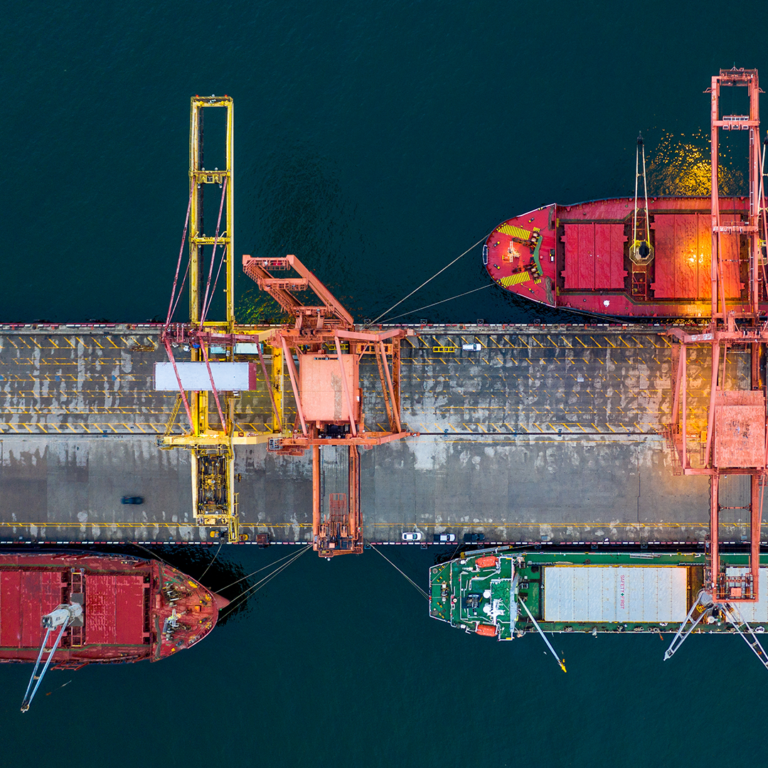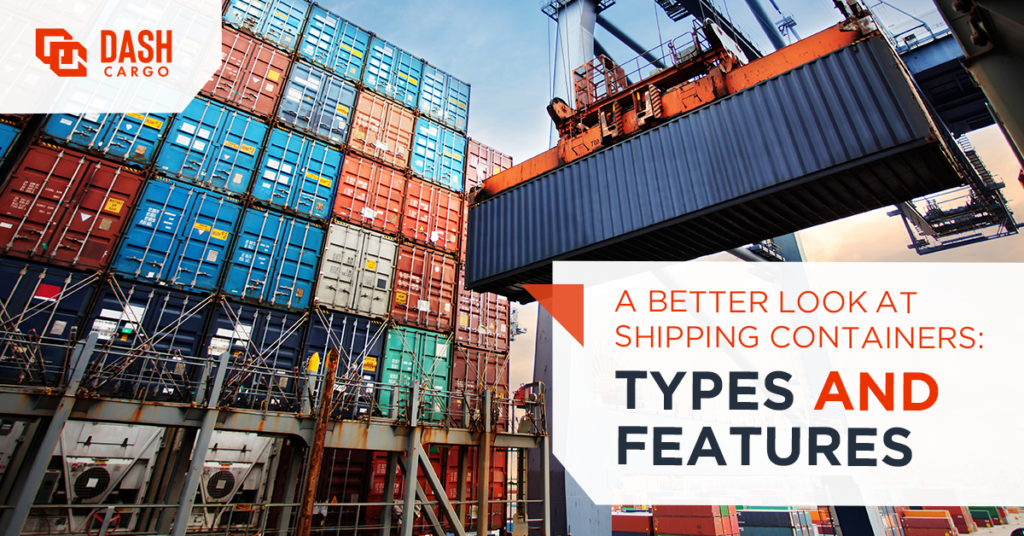
It’s easy to forget that the everyday products we use – from our favorite clothes to handy gadgets — are a direct result of importing and exporting. Setting sea vessels, trucks, and aircrafts aside, one of the essential parts of the shipping process would be containers.
Given that many factors may affect products during transit, these contraptions enable freight forwarders to preserve and deliver goods with ease. If it’s your first time shipping or have a new line of products to export, knowing the different shipping container types will help ensure that your items are delivered in top condition.
This guide will give you a quick rundown of the different shipping containers and what products they’re best suited for.
A Breakdown of 10 Shipping Container Types
Different containers have different purposes and specialties. Check out the ten shipping containers below to learn more about what they’re used for.
1. General-purpose/dry container
Source: Container Technology
With their simple design, it’s no surprise to see why these shipping container types are the most used in the shipping industry.
These are either 10, 20, or 40 feet long and are usually made of durable, Corten steel. They are ideal if you plan on shipping dry goods such as clothes or furniture.
2. Flat rack container
Source: Direct Industry
The typical height of a standard ISO shipping container is 8.5 ft. or 2.59m, and its width is 8 ft. or 2.43m. If the items you intend to ship are taller or wider than those dimensions, a flat rack container might be for you.
They’re designed without a top and sides, similar to what bookends look like. Flat rack containers typically come in 20- or 40-feet long variations, ideal for more oversized items.
3. Open top container
Source: Container Sales
An open-top container is essentially a regular general-purpose container without a ceiling. This makes it ideal for two scenarios.
The first scenario is if what you intend to ship materials that are taller than the height of a regular shipping container. The second scenario is if your items are too wide to fit through the door of a standard container. Timber, machinery, and other similar items are usually transported through open top containers.
4. Insulated container
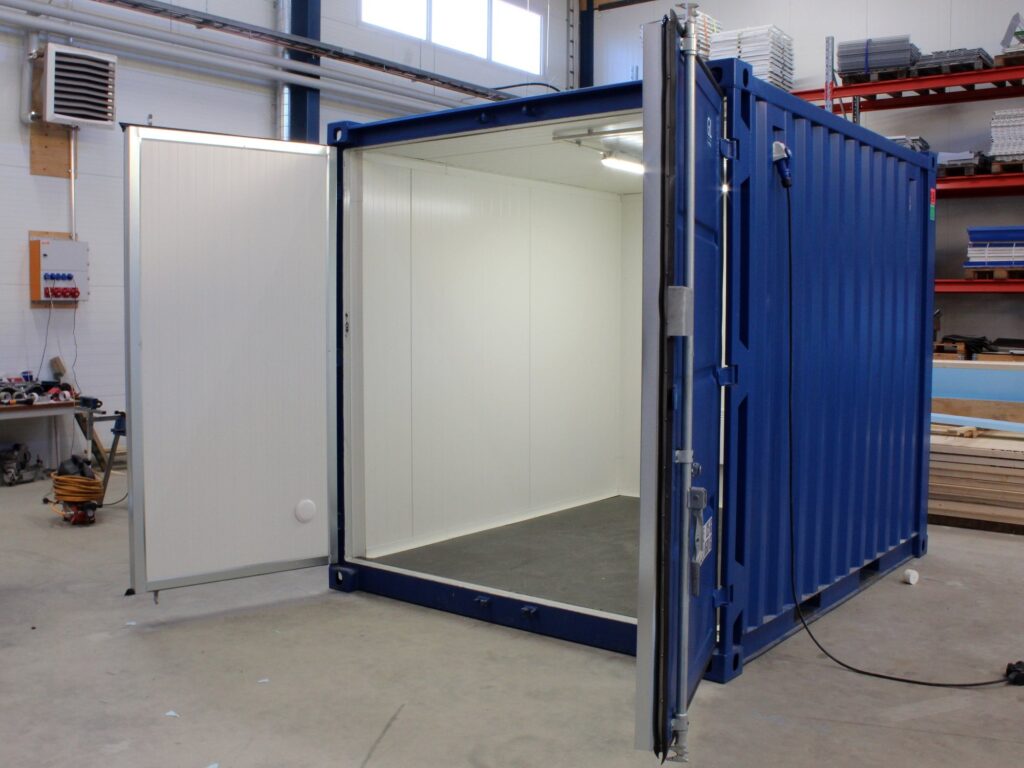
Source: MC Containers
If the product you intend to ship is perishable or sensitive to the temperature, such as food or medicine, an insulated container could be perfect for you.
These containers are typically double walled, with a layer of insulation on the inside to ensure the items aren’t affected by external heat.
5. Double doors container
Source: Port Shipping Containers
The double-doors could either be on the side of the container or the front and back, creating a tunnel that allows you to load and unload cargo on either side of the container. These make it easier to transport vehicles, for instance, since you won’t have to go through the trouble of backing in or out of the container.
6. Refrigerated ISO containers
Source: IMC Container
If the product you’re shipping needs to be stored in a cool environment, the refrigerated ISO container, or reefer, would be for you. You can think of them as large refrigerators and are typically used for transporting meat, dairy, and other temperature-sensitive food.
Unlike the insulated containers, refrigerated ISO containers have an active cooling mechanism that keeps the inside cooled up to around -20°C.
7. Tanks
Source: Tankcon International
When businesses need to ship fluids, such as wine, oils, or toxic substances, they use tank containers. These are cylindrically-shaped containers that are designed to hold such fluid materials.
They come in various lengths, from 20, 40, to 45 ft., and can typically hold anywhere from 24,000 liters to 46,000 liters of fluids.
8. Intermediate bulk shift containers
Source: Daniels Training Services
Intermediate bulk containers, or IBCs, are smaller than the standard shipping container. They typically have a length of 48 inches and a width of 42 inches and can carry anywhere from 275 gallons to 330 gallons. Their size makes them ideal if you want to save space or don’t have much material to ship.
These are typically used to ship fluid materials such as : chemicals, liquids, medicine, and even grains.
9. Half-height containers
Source: 271 Containers
As the name suggests, half-height containers are half the height of the average shipping container. They also have an open-top design, which can accommodate items of varying sizes. However, these containers are most used for transporting piles of material, such as coal, sand, and gravel.
10. Pallet wide containers
Source: K-tainer
Pallets are commonly used to hold objects in a stable position and make them easier to carry using a forklift. Pallet-wide containers were made to securely fit European-sized, 40″ by 47″ pallets, preventing unnecessary movement inside the container.
These are ideal if you want to ensure that what you’ll be shipping is fragile and you want to ensure that they won’t experience too much rattling during transport.
Find the Right Container for You
Behind every imported item is a shipping container that kept it safe during the entire trip. Different shipping containers are used for different purposes so ssing the wrong one — such as a dry container for perishable goods — could become a logistical nightmare for you and your business.
Working closely with freight forwarding experts such as Dash Cargo can help with the logistics and intricacies of your shipping operations. Contact Dash Cargo to learn more about our Sea Freight Shipping solutions!

